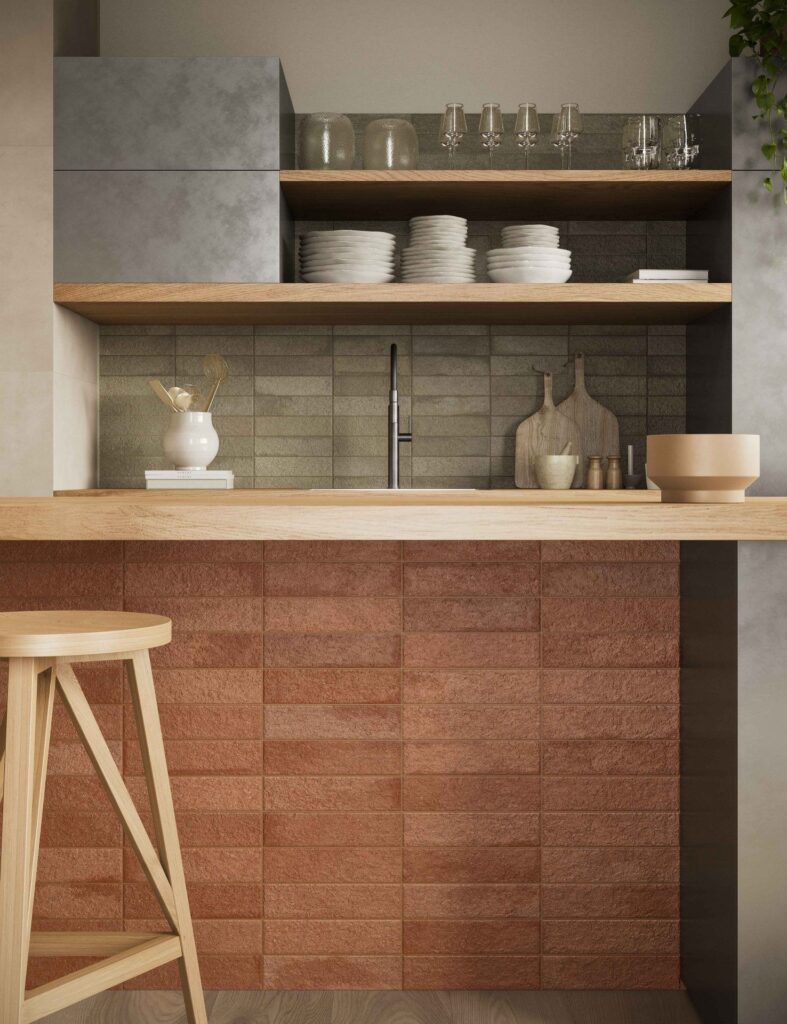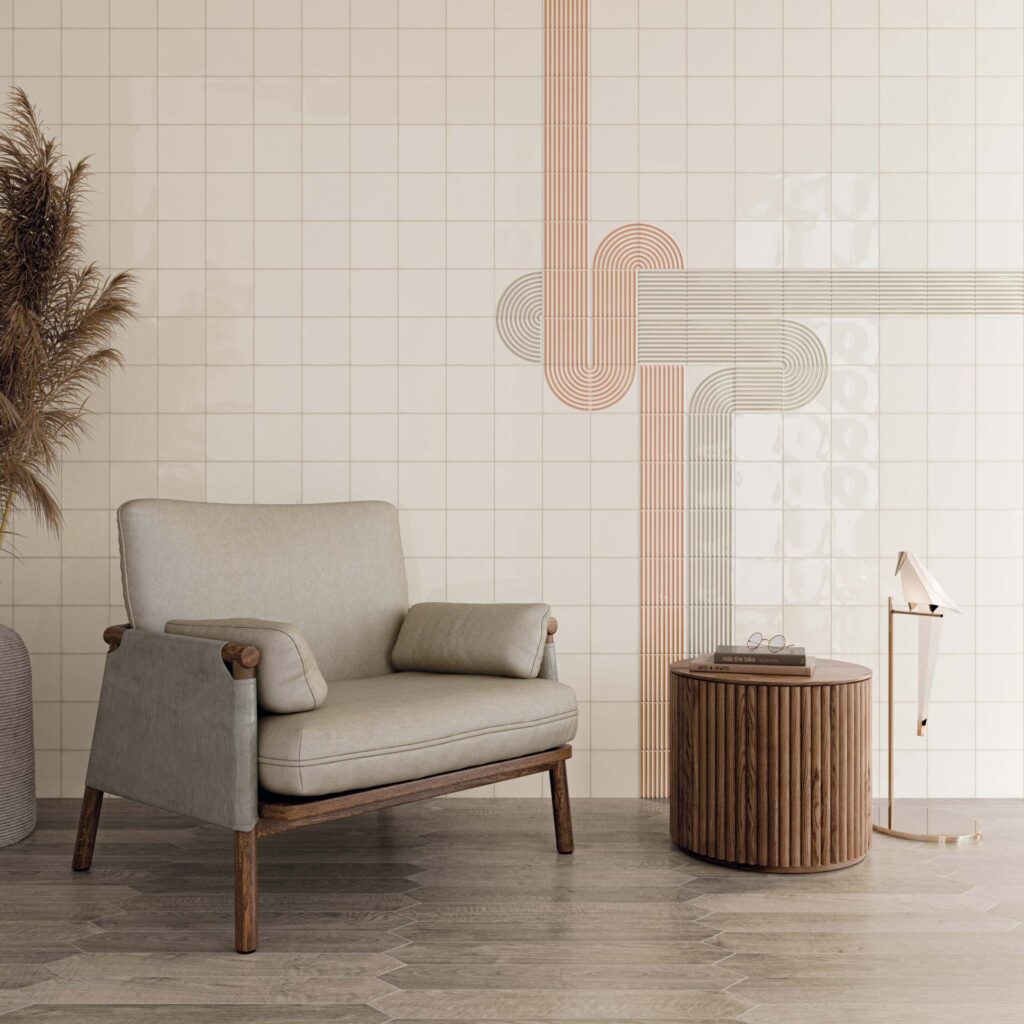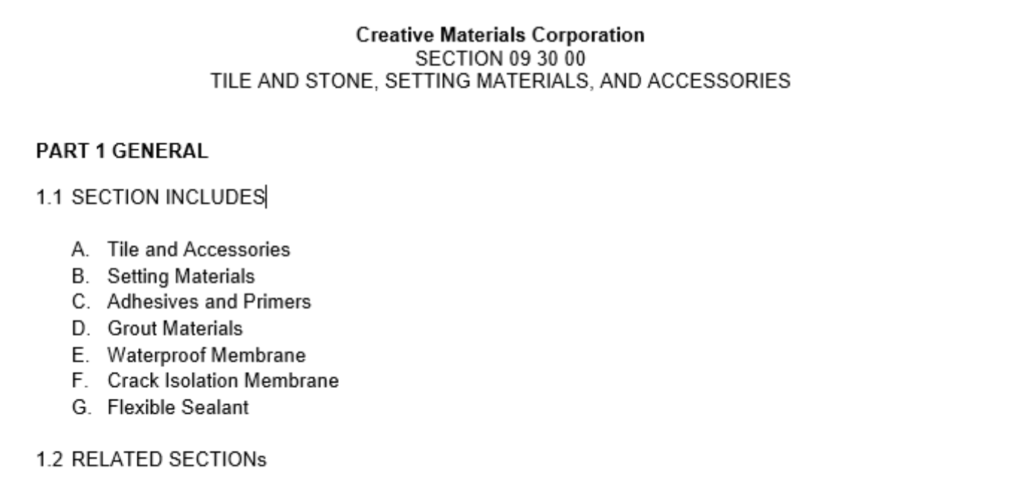
A good tile specification in a commercial construction project lays the foundation and groundwork for a successful installation, providing detailed step-by-step instructions along the way. A comprehensive tile specification ensures the project meets design standards, quality expectations, and durability requirements. Additionally, a thorough specification guides and protects all parties from job site failures, construction delays, time-consuming RFIs, and costly change orders. Working in this industry for over 25 years has taught me the true value of minding and using the carefully laid out specification guidelines available. “An ounce of prevention is worth a pound of cure,” “measure twice, cut once,” and all the other classic adages make sense and prevent a world of hurt…and cost!
Ok, ok. I think I’ve made my point. While you already may know the how, what, and why of specifications, this blog offers a bit of insight into the general layout of a tile spec. We’ll also cover deeper thoughts, tips, and explanations for each section to help guide the specification process.
A project assessment determines the scope of the project. It identifies the areas where tiles will be installed, such as lobbies, bathrooms, kitchens, locker rooms, BOH (back of house), etc. Considering the project’s purpose, foot traffic, light or moderate commercial traffic, environmental conditions, and design aesthetics are essential in this process. Although you may think this is all preliminary work, it is an ideal time to involve your Architectural Sales Consultant. These experts offer extensive experience and knowledge to assist you with identifying areas optimal for tile placement. There may be areas you never considered before that may now make sense to carry exciting elements of design into new spaces. Think porcelain pavers for patios and porcelain brick looks or metal-look gauged panels for exterior walls or fireplace surrounds! Additionally, working with our experts may save you time and money on your project along the way, and who wouldn’t find value in that?
Tip: Be Specific | Based on your knowledge, you may think that using a broad and generic ANSI standard is enough. Unfortunately, I’m here to inform you that it is not. The reason is genericity. (I had to check and ensure that it is an actual word.) ANSI standards are recommendations only. There is no rule or law stating those standards must be followed. A better way to achieve the goals set in the project’s initial conception is to list specific TCNA (Tile Council of North America) methods for each area where tiles will be installed. Providing specific TCNA installation methods per scope and area removes ambiguity and uncertainty. This benefits all parties involved in this part of the design and construction process. While it does take some initial attention, the result outweighs any extra effort put in at the beginning. (Adages are starting to make sense now, right?!)
Updating an old, recycled master specification with new and relevant methods is vital. Delete all non-applicable terms and methods in both the Product and Execution portion of the tile specification. Your tile specification must also be current and relevant, with tile, grout, and setting material products constantly changing and evolving. Choose the appropriate body type of tile based on the project’s needs and specifications. Consider factors such as durability, water resistance, slip resistance, maintenance, accessibility, and aesthetic appeal. And remember, this step should be completed for each area of the project using tile. Different areas require different products and setting materials.
Another advancement technology provides is the ability to carry one aesthetic or a complementary look from the interior to the exterior of a building. Several porcelain tile collections offer colors and sizes in standard thickness and 20mm, in varying finishes ideal for an exterior application. Inside to outside dining areas, hotel porte-cochere to lobby; designs can seamlessly flow between areas using the same product. Perhaps the polished version of a classic marble look can be used throughout the lobby of a hotel, yet in the same color, carried to the porte-cochere in a porcelain paver with a grip finish. Possibilities have come so far.
While it may feel overwhelming, you can rest easy knowing that our experts are your lifeline to achieve this quickly. Knowing and understanding what materials work best in which areas to achieve a successful result is merely one feature that sets Creative Materials apart. Sorry for the shameless plug, but partnering with the average “tile rep” is not the same.




The responsibility for communicating and documenting tile specifications within a project can vary depending on the specific project, its complexity, and the roles and responsibilities of team members. That said, this step is crucial regardless of responsibility. Here are some key stakeholders who typically play a role in this process:
Effective communication and documentation of tile specifications are crucial to ensure that suitable materials are used, that the installation process runs smoothly and that the final result meets the client’s expectations and project standards. Therefore, collaboration among these stakeholders and clear lines of communication are essential to the project’s success. It helps prevent misunderstandings, ensures consistency, and contributes to a successful commercial construction project.
The specification process is more than what we’ve summarized here. It involves understanding inherent tile industry factors contributing to long lead times, discontinuations, stock-outs, and budget overages. To learn more about what this means, sign up for our Spec Smart: Understanding What Happens After You Specify Tile CEU.
Have more questions? Contact the QA&T Team. We’re happy to help or walk you through our 3-part specification guideline. We love hearing from clients and talking about your projects!